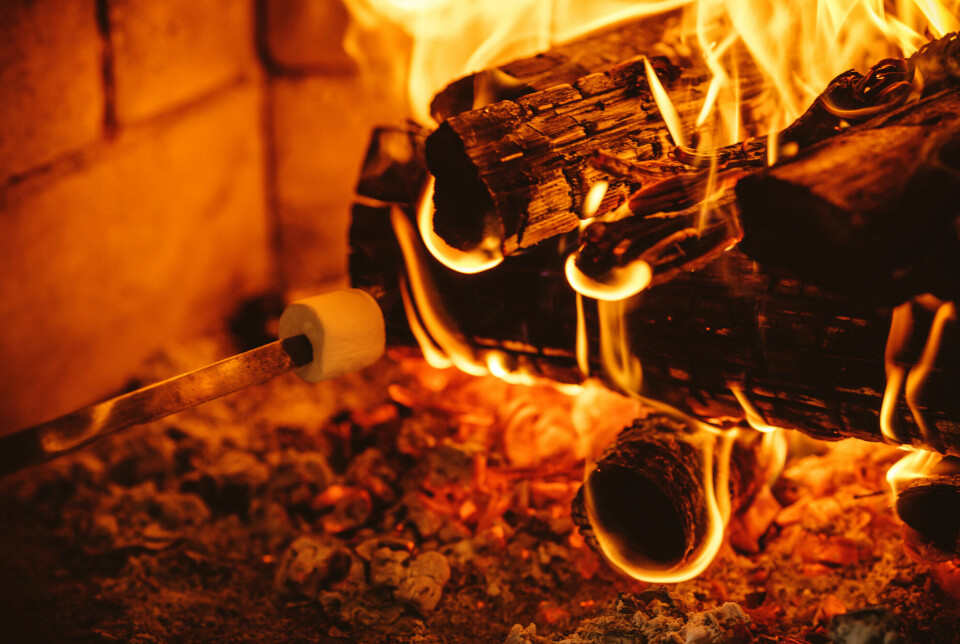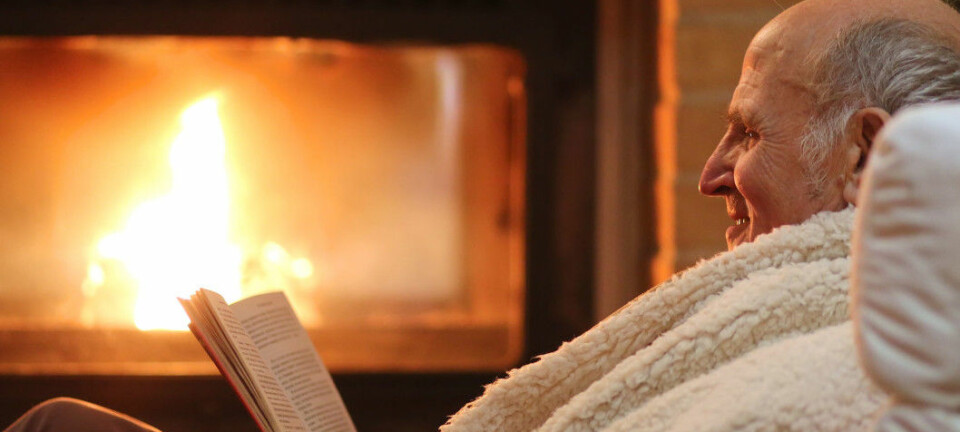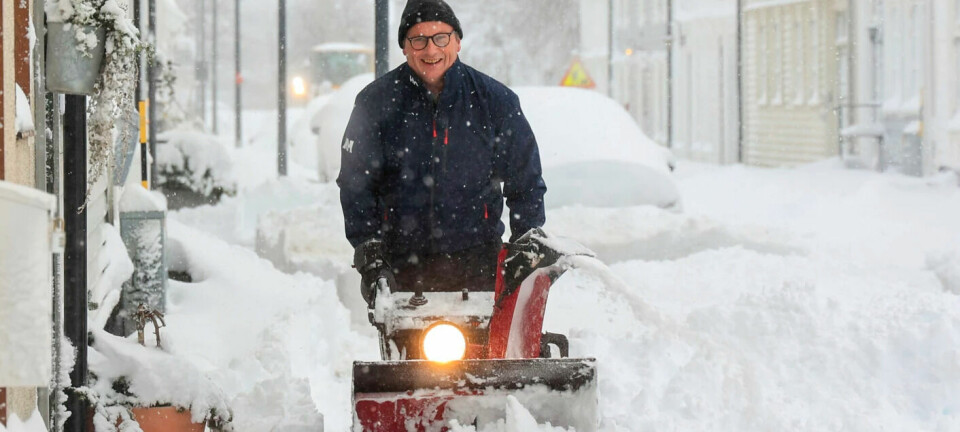
An open fireplace is cosy, but not very useful
The open fireplace is probably better suited for grilling marshmallows than for heating your home.
The cold creeps into homes in thousands of different ways, and electricity is expensive. This winter, many have found joy in wood burning.
It’s possible that the old fireplace in your home has been lit for the first time in ages.
If you have an open fireplace that you enjoy using, do not assume that you are significantly reducing your electricity usage. However, there are helpful tips available.

An open fireplace is cosy, but not particularly useful
“Open fireplaces are really just for creating a cosy atmosphere or for use on special occasions,” chief scientist Øyvind Skreiberg at SINTEF says.
Earlier in January 2024, sciencenorway.no published an article with some wood burning tips.
The reason for this is substantial heat loss. You might feel a bit of radiant heat if you sit or stand in front of it, but the fireplace barely heats the room, the researcher explains.
The fireplace can be so inefficient that its effect becomes negative, according to Skreiberg. The problem arises when a lot of heat escapes straight up the chimney.
More cold air than heat
“One of the main problems with open fireplaces is their tendency to pull in too much air without any effective way to control it. This leads to an excess of air, inefficient burning, and a significant loss of heat,” Skreiberg says.
Additionally, the warm indoor air is replaced by cold air from outside. The damper needs to stay open long after the fire dies down to prevent unburned gases from seeping into the room.
Due to its low efficiency, the fireplace can’t compensate for this. As a result, the overall balance is poor, and in the worse case, negative. This means that more heat escapes through the chimney than what the fireplace can produce.
Warmth from the fireplace without sacrificing the cosy fire
Skreiberg points to statistics from Statistics Norway which show that fireplaces have very low energy utilisation compared to free-standing stoves.
Most viewed
In a 2012 article, researcher Hank Stelzer from the University of Missouri in the USA wrote that traditional, open fireplaces should not be considered as heat sources at all.
“This heating unit has a dismal operating efficiency of about 10 per cent, and in some cases can even have a negative efficiency,” he wrote.
The solution? Installing an insert or some sort of stove within the fireplace.
“It operates on the same principle as the free-standing stove,” Skreiberg says. This means it effectively generates heat. Plus, with a stylish insert that includes glass doors, you do not have to sacrifice that cosy fireplace atmosphere.
Crackling cosiness with a downside
“We've all sat in front of a fire and felt the wonderful radiant heat it provides, both outdoors and indoors in a hearth fireplace,” Brede Børud writes in an email to sciencenorway.no.
He is the chairman of industry organisation Norsk Varme. He agrees that the pleasant radiant heat is just part of the picture.
“The downside is the lower efficiency, and the lack of heat after the fire has burned out,” he writes.
He believes that most people are aware that an open fireplace is inefficient for heating.
But why did so many open fireplaces come to be built in chilly Norway?
“The reason so many open fireplaces have been built is probably due to the allure of the fire and the cosiness it brings, as well as the tradition of the open hearth and fireplace as part of the interior decor,” Børud thinks.
Installing an insert
Øyvind Skreiberg recommends installing an insert to make the fireplace more efficient.
Is it possible to install an insert in all fireplaces? And what should you consider when choosing an insert?
“First and foremost, ensure that it’s a clean-burning insert,” Børud advises.
To install an insert, there must be enough space for the specific model you choose.
He suggests referring to the manufacturer's installation instructions, which can be found online. There, you'll find the dimensions for installation, distance requirements, and descriptions of air vents.
“You’ll also find instructions on how to connect it to the chimney,” Børud adds.
Furthermore, he advises consulting with a fireplace or stove retailer for personalised advice and expert assistance.
———
Translated by Alette Bjordal Gjellesvik
Read the Norwegian version of this article on forskning.no







































